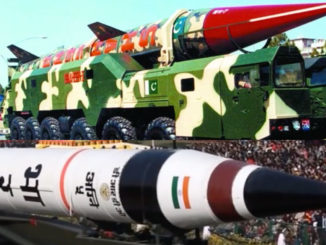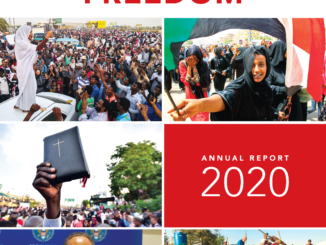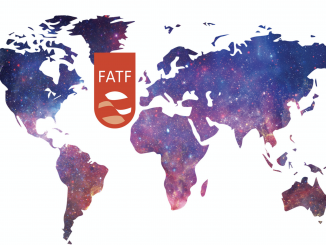 There can be no doubt that the China-Pakistan Economic Corridor (CPEC) both as part of the Belt and Road Initiative (BRI) and within the traditionally close bilateral China-Pakistan relationship represents a tremendous opportunity. CPEC is a catalyst to economically transform Pakistan towards an economic takeoff and to give much needed economic depth to the strategic relationship between the two close allies. Pakistan is an important country within the region and beyond, and CPEC has further enhanced its relevance and image because of this potential.
There can be no doubt that the China-Pakistan Economic Corridor (CPEC) both as part of the Belt and Road Initiative (BRI) and within the traditionally close bilateral China-Pakistan relationship represents a tremendous opportunity. CPEC is a catalyst to economically transform Pakistan towards an economic takeoff and to give much needed economic depth to the strategic relationship between the two close allies. Pakistan is an important country within the region and beyond, and CPEC has further enhanced its relevance and image because of this potential.
A programme of such magnitude requires improving capacity in planning and implementation as it progresses. It is also necessary to identify the spectrum of external and internal challenges that it faces so that these can be dealt with and overcome.
External Challenges
There are a number of international and regional geopolitical realities which are the cause of criticism and opposition to CPEC. There is competition for influence between the U.S. and China at one level, and between India and China at another. Since the U.S. has grown closer to India, Pakistan is in the crosshairs of this rivalry. While the U.S. is seemingly interested in a stable and economically progressing Pakistan, it prefers that it follows its line on Afghanistan, but also caters for that nothing should adversely impact India to which it has become more closely linked in a strategic partnership.
For U.S. the Pakistan-China economic relationship was first met with ambivalence and then some overt criticism. The American argument against Chinese investment in Pakistan is that the terms offered by China are to its advantage as the rates are far higher than what would be offered by other countries; although it raises scepticism since neither America nor any other country, including their multinationals, is willing to step in on the same scale as China. This American criticism reflects a broader Western critique, fanned by its media, terming Chinese assistance and economic involvement as exploitative, particularly in Africa and elsewhere. That Chinese assistance goes way back is ignored. For instance, some of the infrastructural projects in Africa would not have otherwise seen the light of day, such as the 1860 km Tanzam Railway completed in 1975 providing access to landlocked Zambia, then surrounded by hostile colonial countries, for its copper exports to the Port of Dar es Salaam in Tanzania. The 1300 km mountainous Karakoram Highway which has been jointly built – linking Pakistan with China – is another example.
For India any development that strengthens Pakistan economically is unwelcome, and CPEC is seen as a threat to its overarching ambition to dominate South Asia. As far as Pakistan’s other neighbours are concerned, Iran views Gwadar as a competition to the Chabahar Port; an alternative trade route to land-locked Afghanistan which it is developing with India. Afghanistan can certainly benefit from the trade linkages offered by CPEC, and the route to Gwadar is shorter and more economically viable than from Chabahar. However, Afghanistan has had a difficult relationship with Pakistan since 1947, largely due to reasons of its own making, and which were fueled by India since the independence of both countries in 1947 to create a hostile Afghanistan on the western flank of Pakistan.
The net result of these varying degrees of hostility from India and Afghanistan is that India has been using Afghanistan with help from the National Directorate of Security (NDS), the Afghan intelligence agency, to try to destabilize Pakistan by training, arming, financing, and sending terrorists into erstwhile FATA and urban areas of Pakistan, and also insurgents to fight the state in the province of Balochistan. While the objective of this campaign is to erode the law and order situation, a specific objective is to target Chinese nationals engaged in CPEC or other projects within Pakistan to cause a sense of insecurity. Kulbhushan Jadhav, the serving Indian Naval Commander working covertly in Chabahar for the Indian intelligence agency RAW, on his capture within Pakistan confessed and provided details that he was part of a wider Indian campaign to arm, fund, and direct terrorists in Balochistan to destabilize Pakistan in general and disrupt CPEC in particular.
We need to completely defang the Indian backed terrorists in Balochistan while at the same time implement plans to make the economic and political process more inclusive. CPEC will help in furthering vocational training and jobs. TAPI, the natural gas pipeline, once laid in Balochistan, will provide significant synergy to this process.
Internal Challenges
There are also a number of internal challenges. In the context of the CPEC Long-Term Plan Pakistan’s vision is to:
• Modernize infrastructure and remove critical bottlenecks within it which constrain long-term growth and development;
• Connect major economic regions of Pakistan to reduce regional economic development gaps through the emergence of nodal cities as interconnective engines of growth;
• Upgrade the level of development, particularly at the provincial government level, with the input of Chinese aid, technical assistance, and investment;
• Upscale investment relations with China to promote export of goods and services to China, grow our industry and employment, and strengthen and form new industry clusters; with the objective of initiating a sustainable high-growth trajectory to promote food, water, and energy security, thus leading to the improved quality of life of the people, and contributing to the promotion of peace and stability in the region.
China’s vision for CPEC is to:
• Share with Pakistan China’s advantage in funds, technology, production, engineering, and operational capability for mutual development;
• Promote long-term social stability in Pakistan;
• Accelerate implementation of the Silk Road Economic Belt and the Western China Development Strategy.
While the long-term guiding visions of both partners are clear, complementary, and justified, implementation constitutes significant challenges. In Pakistan, there was a discussion on whether a programme approach or a step by step project treatment was preferable. The Chinese planners must also have been under tremendous pressure to deliver and would have, one presumes, preferred the step by step approach. Understandably the pragmatic approach prevailed. The reality is that one approach is not exclusive of the other. A stepped prioritization process is required, as are targeted interventions in parallel. In Pakistan, centralized planning and decentralized implementation is the practice. In China, decentralized planning and centralized implementation is the rule. Both methods have to be harmonized as CPEC progresses.
While both governments have attempted to be transparent, the general impression in Pakistan is that the government of Pakistan has not managed to explain clearly the full extent of cooperation with China under CPEC, particularly the financial and other implications. As a result, some manner of misunderstanding can arise. Of course some of this questioning, sceptical, or negative projection, especially in social media, comes from its being motivated and even paid for by those opposed to CPEC, including India. Pakistan’s governmental and other policy community has to step up to better explain CPEC; not just through official spokespersons, and in the traditional print and electronic media, but via social media as well.
In case of Pakistan, there also seems a lack of adequate training and vocational linkages. Training is being imparted here and some trainees being sent to China but much more needs to be done. Then there are governance and delivery capacity issues. There has been deterioration in Pakistan’s capability to implement projects in the last two decades. To complete projects in the least time for the economic benefits to begin flowing at the earliest, more Chinese engineers and skilled workers will have to be utilized. This adds to the perception that in CPEC and other Chinese-related projects fewer Pakistanis than desirable are being employed.
Chinese companies working in Pakistan on their part feel that: the bureaucratic approval and processing timeline of Pakistan’s bureaucracy is very slow; the tax authorities are inconsistent in their approach; security measures are well in hand but at times the cautious approach of the dedicated security authorities slows down the pace of work; and that some less experienced Chinese companies are trying to underbid for projects beyond their capability.
There is a lack of rigour on studies to calculate and project the competitive advantages of various CPEC related communication routes and probable traffic utilization, especially for transit trade to and from Afghanistan. While the importance of nodal cities for growth through interconnectivity is recognized, the requisite urban planning to take advantage of these opportunities has not yet been set in motion; instead, there are real estate booms.
Balanced regional development and equity is both an important consideration and an objective, and the acceptability of CPEC will in part depend on progress in this direction, and public recognition that it is being achieved.
The Way Forward
Pakistan needs time and space to internally consolidate and develop, and within that priority, CPEC will grow. The external challenges have to be met. Hence while deepening ties with China continues, improving relations with the U.S. also in a manner consistent with our core national interests is likewise vital. For America, the road to better relations lies through Kabul. We should do and are doing all we can is evident, again consistent with our core national objectives, to facilitate the objective of reconciliation in Afghanistan which finally now is also the U.S. objective: to allow them to withdraw completely or possibly leaving a residual anti-terrorism force or airbase in Afghanistan.
A better relationship which improves our relevance to the U.S., and by extension to its western allies in the EU and the Far East, is in our interests. The EU has also emerged as an economic and security power increasingly forced by U.S. policy to carve out an independent role. Hence closer ties with the EU is another priority, and for attracting its investments. Better relations with the U.S. would also have an effect on India, which has been emboldened by the support of the U.S. and its western allies.
While keeping our defensive guard up with India we must persist in projecting our sincere desire for better, peaceful relations. This is also important for our image abroad. This policy was maintained in the recent crisis. The Indian airstrike, a major escalation in aggression, was countered by a prompt strike in response and the downing of the Indian fighter jets. In a unilateral gesture, the Indian pilot was returned soon after and Prime Minister Imran Khan reiterated his call for peaceful relations with India and talks towards that end. Earlier we always had a constituency for peace and better relations in India; and though that changed; we need to make efforts, as with the Kartarpur Corridor, to rebuild that constituency. In time, as our economy improves, India may consider better relations in its economic, and then other interests.
CPEC is slowly changing the economic landscape and we need to hasten this process. There are seven additional areas we need to focus on.
First of all, we need to better analyze CPEC projects and more diligently negotiate their terms and conditions be they FDI, soft, or commercial credits. Secondly, to attract the large Chinese investment companies to take equity positions in many of the projects to both reduce our exposure and ensure they are structured better to eliminate the possibility of gaming the system. Thirdly, proactively identify and engage Chinese sunset industries to encourage them to relocate to Pakistan under CPEC’s Special Economic Zones (SEZs). Fourthly, transform Gwadar, which has a prime strategic location outside the Strait of Hormuz, into not only goods and oil/gas transhipment centre but also a petrochemical complex by linking GCC exports and Chinese imports. This may be already happening if Saudi Arabia sets up a refinery in Gwadar. Fifthly, revive the original plan to parallel TAPI natural gas pipeline with an oil pipeline branching off to Gwadar. Sixthly, to jump to developing links, training, and synergy for our software industry with their Chinese counterparts without waiting, as now in the plan, for industries to be set up in the SEZs. Much less investment and resources are required than in bricks and mortar. Seventh, more training at all levels for CPEC projects and programmes, so that more Pakistanis are progressively employed and develop capabilities to use at home and abroad, as happened when thousands of engineers and technicians were trained by the erstwhile USSR to establish and run the Karachi Steel Mills in the 1970s.
We need to attract investment from other countries around the CPEC catalyst. There is already more interest. An American diplomat recently agreed that economics has a huge role to play; and that a growing business relationship between the U.S. and Pakistan would have greater implications, adding that he viewed recent reports of investments by Cargill and ExxonMobil in that light. The German ambassador in interviews has said that German companies are looking more closely at Pakistan since CPEC.
In conclusion, in terms of impact and acceptability, the advantages of CPEC will be recognized and acknowledged by the people of Pakistan when they can see and progressively experience the benefits. Benefits in terms of more jobs, and an economy which is delivering and thereby improving their quality of life and expanding opportunities for them and their children. Pakistani nation is sure that this shall be the outcome. But to reach this national objective we need to identify both external and internal challenges, a step that is imperative to work at overcoming them.
The writer is a Distinguished Visiting Fellow at the National Defence University
the article was originally published on HILAL
Asia’s Emerging Geopolitics: China and India in a New Geopolitical Environment
![]()




Be the first to comment